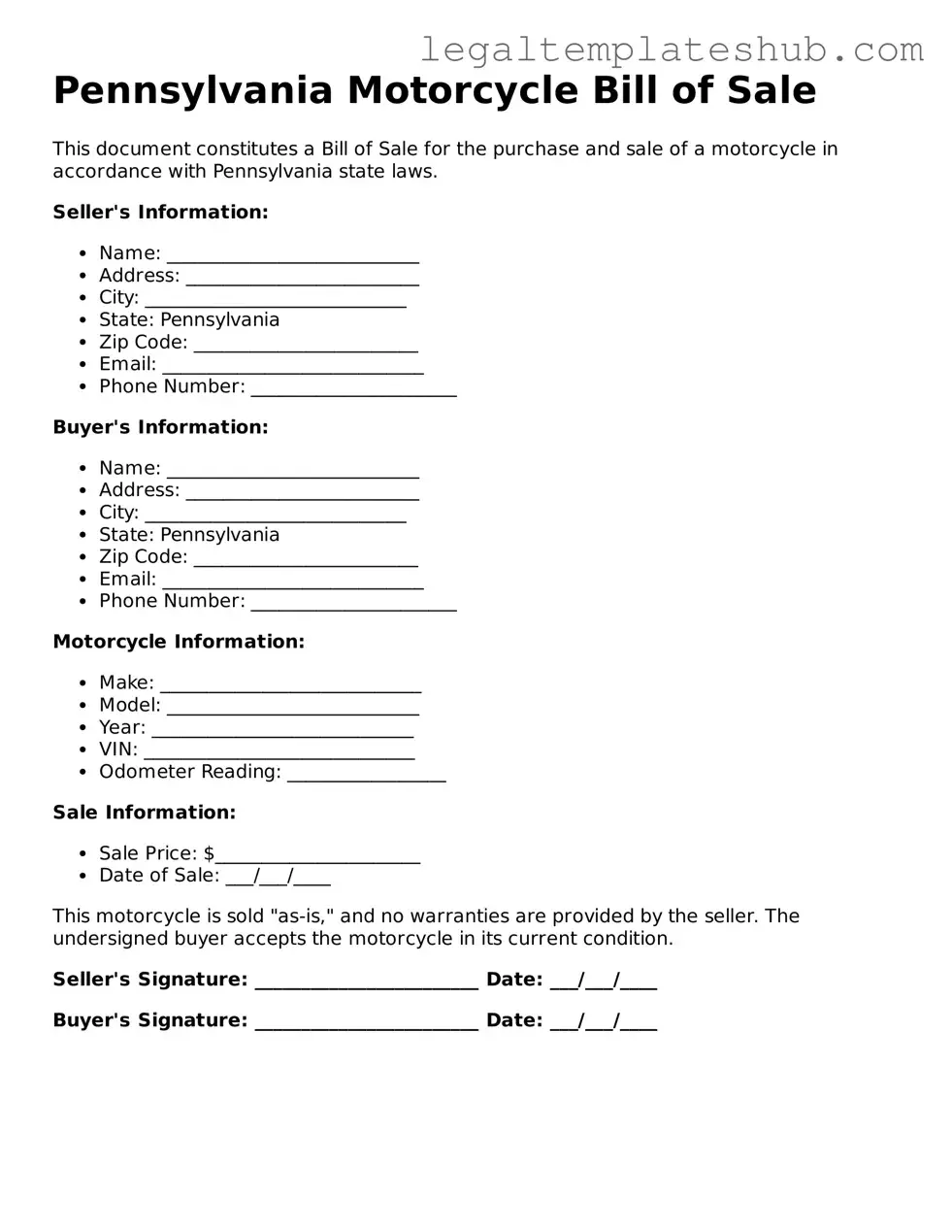Printable Motorcycle Bill of Sale Document for Pennsylvania
The Pennsylvania Motorcycle Bill of Sale form serves as a crucial document that records the transfer of ownership of a motorcycle from one party to another. This form not only provides legal protection for both the buyer and seller but also helps in establishing a clear chain of ownership. To ensure a smooth transaction, it’s essential to fill out this form accurately.
Ready to complete your motorcycle sale? Click the button below to fill out the form!
Access Editor
